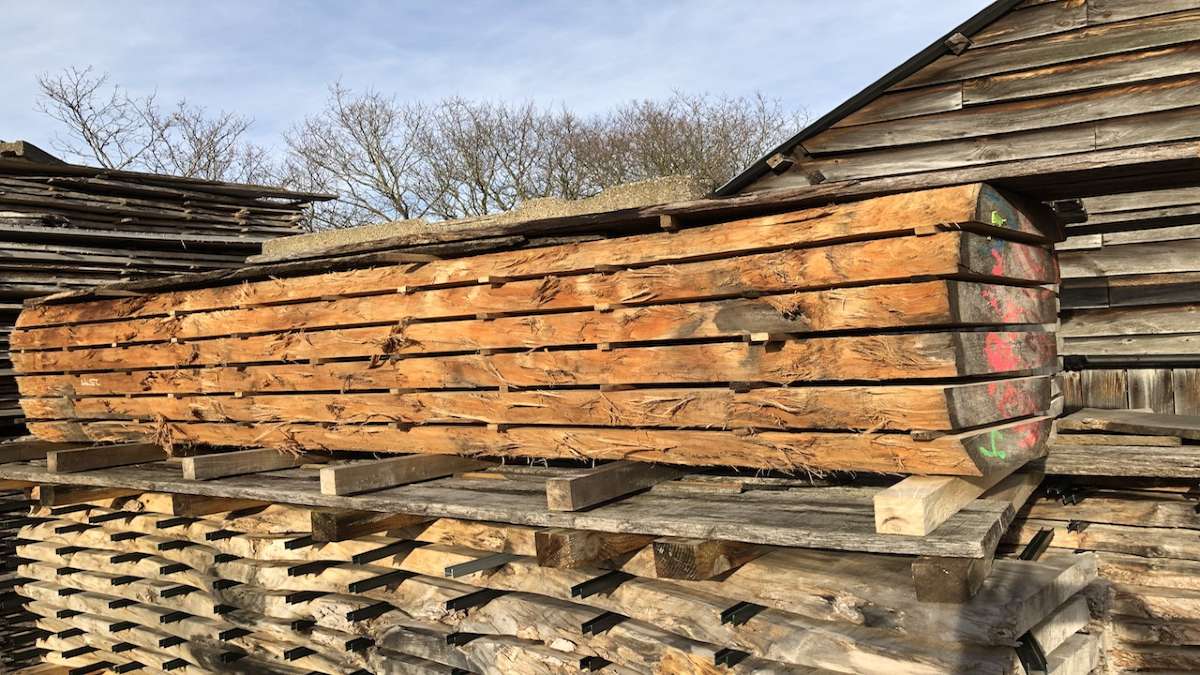
What’s the difference between green oak and air dried oak and when to use either for a particular job. Perhaps the short answer is that it is dependant on the type of job. The timber industry uses the term green oak or fresh sawn oak for timber felled within the last 18 months. It describes the freshness of the timber not the colour! When felled an average tree will have a moisture content sitting at around 80%. As the wood dries the moisture content gradually decreases, this process is called ‘seasoning’.
We recommend green oak for oak frames, including roof trusses, beams and posts. It is strong, durable, easy to work with and more economical than air dried oak. Its relatively high moisture content makes the timber more suitable for cutting and shaping joints precisely.
As green oak dries is shrinks across the board. Splits open up along the grain as the fibres dry and these are a natural feature of oak. They do not manifest across the grain and therefore the beam is not weakened. This shrinking is taken into account when connecting mortice and tenon joints. Consequently it tightens the joints which then gradually harden pulling them into alignment as the timber dries. This is turn produces an extremely strong joint. This ageing process increases the strength of the entire oak frame.
Responsibly sourced green oak is extremely environmentally friendly. Aside from the stunning aesthetic attributes it has a renowned resistance to decay. It doesn’t require treating in any way and over time the timber develops into a beautiful silver grey colour.
AIR DRIED OAK
Air dried oak or seasoned oak is timber dried naturally in the open air for 2-3 years or even longer. Once cut to the required thickness (ranging from 1’ to 5” inches). Boards are then placed ‘in stick’ and bearers placed between the boards to allow air to circulate. For every inch of timber it takes on average a whole year to dry. For example a 1 inch board takes one year to dry, 2” two years and so on. During this time the shrinks and expands allowing characterful cracks and splits to appear gradually and naturally through the seasons. The resulting product is a far more stable timber to work with as it is not liable to move like green oak. It is therefore more suited to producing internal beams such as lintels, window frames, glazed panels etc for renovation work.
We stock a range of British and European hardwood timbers ready for immediate delivery countrywide. Contact us for more information and prices.

